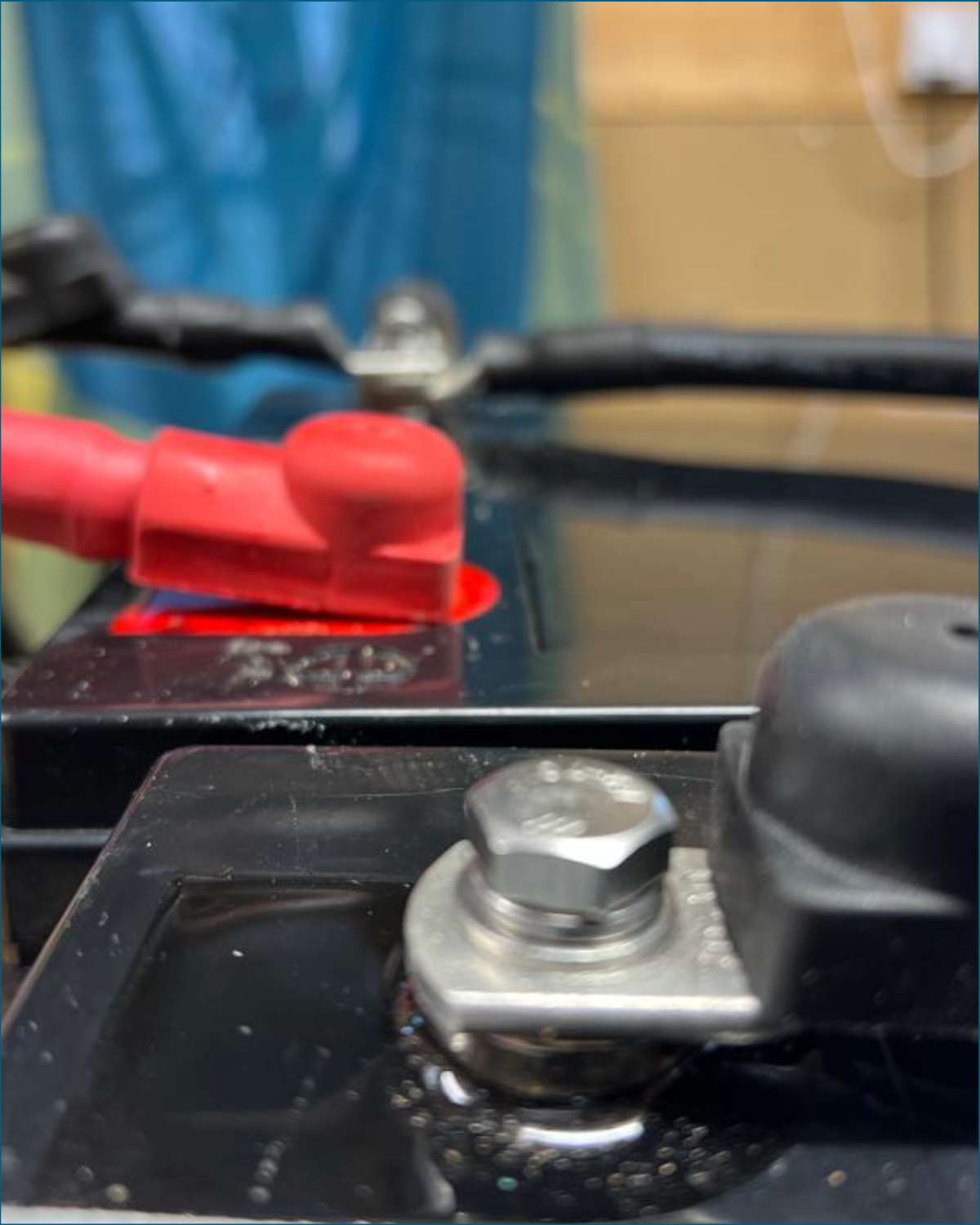Maintaining the charge in the leisure batteries of a campervan electrical system can make or break your van living lifestyle.
If you want to keep the lights on, have chilled beers for sundowners and keep your electrical gadgets charged a well sized system is imperative.
And a means to effectively charge the batteries is as important as calculating and fitting the right size.
We have multiple ways of charging our onboard batteries in our Sprinter conversion including:
- Solar system
- Shore power/hook up
- Alternator (the van’s engine)
Of all these, a system to charge the batteries from the alternator is the most simple and easy to install.
It’s why it was the first method of charging the house batteries we fitted when we built our van.
There’s 2 approaches to alternator charging deep cycle batteries:
- A traditional split charging system or
- A battery to battery charger.
For more information on whether you should choose a split charging system or a battery to battery charger, read our post on charging a leisure battery.
This article covers everything you need to know about a battery to battery charger including what is does, how it works, the best brands and what to look for when buying one.
By the end of this post you’ll have enough information to choose the best battery to battery charger for your conversion van and be armed with installation tips and wiring diagrams so you can get up and running fast.
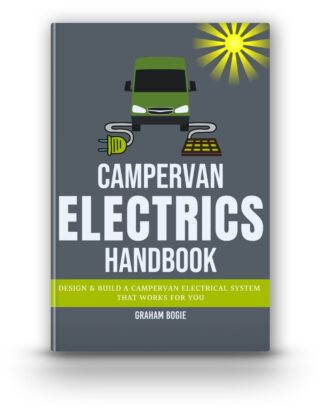
Everything you need to know about campervan electrics. Now available in ebook and paperback!
Learn how to design, size, install and troubleshoot your camper’s electrical system.
Contents
- Battery to Battery Chargers | Our Top Picks
- What is a Battery to Battery Charger
- How does a B2B Charger Work?
- Do I Need A Battery to Battery Charger?
- What Size Battery to Battery Charger do I Need?
- What to Look for When Buying a Battery to Battery Charger
- The Best Battery to Battery Chargers
- Battery to Battery Charger Wiring Diagram
- B2B Installation Tips
When you click on links to various merchants on this site and make a purchase, this can result in this site earning a commission. As Amazon Associates, we earn from qualifying purchases. For more info, please check our disclosure page.
Battery to Battery Chargers | Our Top Picks
Victron Energy Orion-Tr Smart
Sterling Power BB1230
Sterling Power BB1260
CTEK Smartpass 120S Battery Charger
What is a Battery to Battery Charger
Like so many campervan electrical components, a battery to battery charger is often known by other names.
Whenever you hear the terms DC to DC chargers, B2B chargers and 12v battery to battery chargers know they all refer to the same thing – battery to battery charging.
All engine vehicles have an alternator. It recharges the starter battery and provides power to the normal operating electrics of the vehicle like the headlights, windscreen wipers and so on.
Powered by the engine, the alternator charges the starter battery as you drive.
Once the starter battery is charged, the work of the alternator is mostly done.
In older vehicles, any excess electricity generated and not used by the vehicle’s running electrics is, in effect, wasted.
In modern vehicles with smart alternators, the alternator drastically reduces its output once the starter battery is charged.
For motorhomes, RVs and campervans tapping into this inbuilt generator is an ideal opportunity to recharge the house batteries.
A battery to battery charger allows both the starter battery and the leisure batteries to charge at the same time when the vehicle’s engine is running.
Unlike a split charge relay though, the B2B charger is intelligent, providing a more controlled charge.
So if the engine is running long enough, a B2B charger can charge the leisure batteries fully.
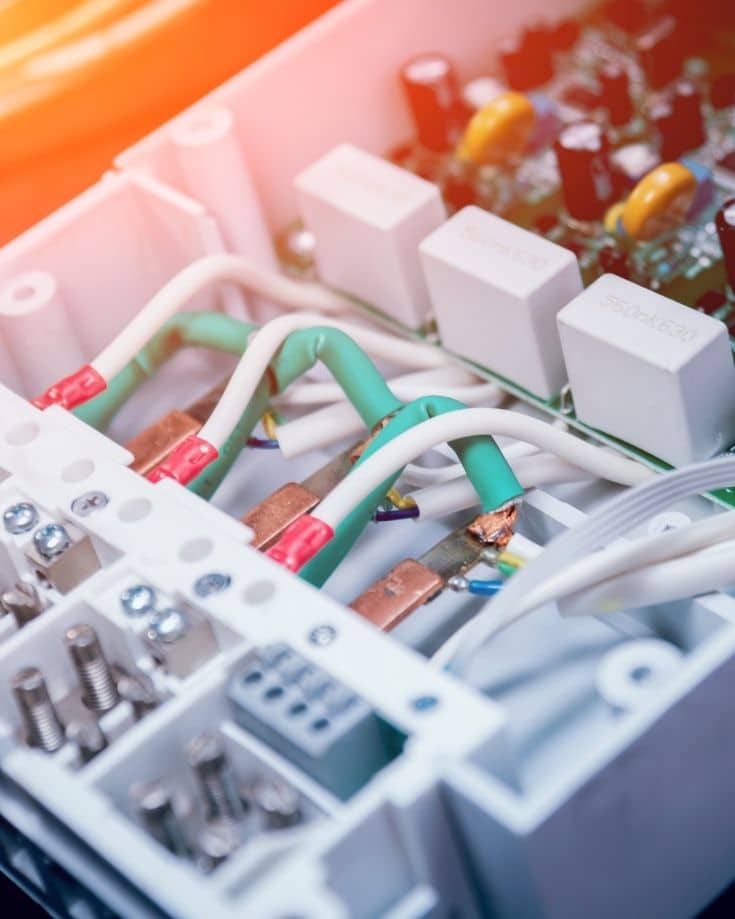
How does a B2B Charger Work?
Because smart alternators reduce their voltage output when the starter battery is full, a B2B has to “trick” it.
With the engine running, the B2B charger senses the increased voltage and switches itself on.
Because it takes power directly from the starter battery, the smart alternator “thinks” it’s never full so continues to supply it with a voltage.
B2B chargers protect the starter battery from being drained by the leisure batteries faster than the alternator is charging it too.
Then the B2B charger does what it does best. It regulates the voltage to meet the charging profile of the leisure batteries for their given state.
By doing so, a battery to battery charger can fully recharge the house batteries, if the engine is running long enough.
Turn the engine off, the starter battery voltage drops quite quickly.
The charger senses this and automatically switches itself off.
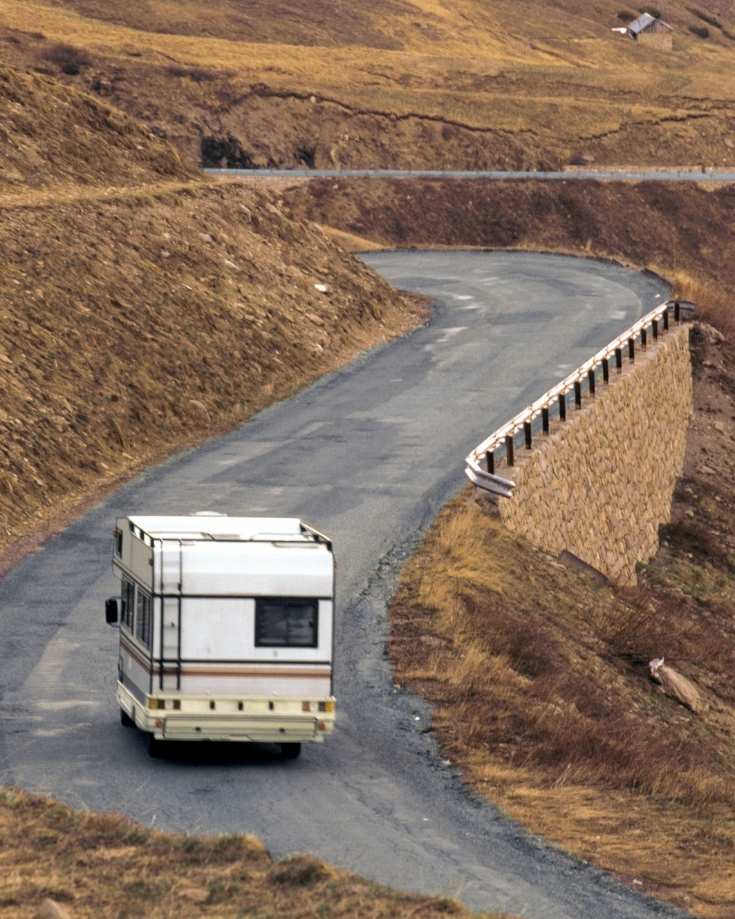
Do I Need A Battery to Battery Charger?
Most of what we’ve read insists that for anyone living long term in their van, a battery to battery charger is essential.
While we hate to contradict, we’ve lived in the van full time since 2018 and we don’t have a B2B charger. With no regrets, we have no desire to fit one either.
This is what we think:
- If you rely heavily on charging leisure batteries while driving, a B2B charger is probably essential because it’s the only way the batteries can be fully recharged. Without this, the battery life is negatively affected.
- If you use campgrounds or other sources of electrical hookup often, a B2B charger is an unnecessary expense. A low cost manual switch or split charge relay will give the batteries a bulk charge while the engine is running and this could be all you need.
- With solar panels, depending on how many peak hours of sun you receive, again, a B2B charger may be overkill. If your solar supply fully recharges the batteries more often than not, we recommend opting for low cost split charging instead, preferably a manual one.
- If you can rely on your batteries getting fully recharged without driving, we recommend avoiding both B2B chargers and all split charging methods. They work the vehicle’s alternator much harder than it was designed for and this in effect shortens its life. And replacing a vehicle’s alternator isn’t cheap!
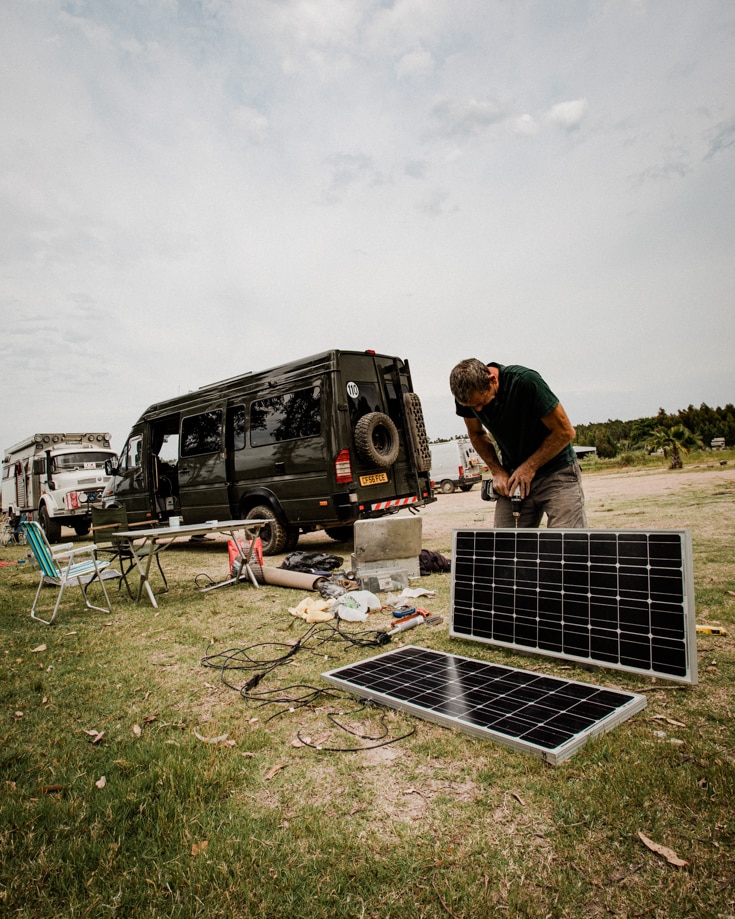
What Size Battery to Battery Charger do I Need?
B2B chargers are sized in amps.
On the component’s spec this size may be referred to as input current, amps out or rated charge current. Either way, it’ll probably be listed in the name of the model.
The rated charge current indicates the maximum amount of current the B2B charger can send to the leisure battery bank.
To understand the optimum size needed, consider the absorption rate of the battery bank.
Leisure battery specifications make reference to this as maximum absorption rate or maximum charge current.
Let’s say you have 1 x 100ah AGM battery with a maximum charge current of 30A.
A 60A B2B charger is a waste of money because although capable of sending 60 amps, the battery can only absorb upto half of this, regardless of its charging state.
If you add a second battery, the total maximum charge current becomes 60 amps. Now the 60A B2B charger is perfect.
You can use a smaller charger, though bear in mind, the battery bank won’t charge as quickly.
It’s worth considering just how discharged your batteries are likely to get.
Lithium batteries can cope with a 100% discharge and can accept much higher rates of charge than a lead acid battery.
So while a 120 amp B2B charger may fully recharge a 200ah lithium battery from empty in around an hour, it’s significantly more expensive than a 60A model.
The cheaper model would take a couple of hours to fully recharge the same battery. And are you likely to have empty batteries? Probably not if you have other charging sources.
We recommend avoiding oversizing battery to battery chargers to save money, and over-working the alternator.
If you plan to increase the battery bank size in the future, it’s more frugal to buy a B2B charger to handle the increase size upfront.
Always check the vehicle manufacturer’s recommendations on the maximum size too.
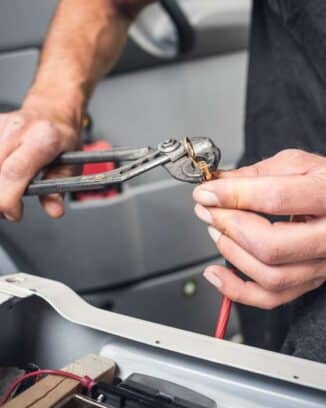
Need help & advice with your electrical setup?
Join Our Facebook Support Group
What to Look for When Buying a Battery to Battery Charger
Battery to battery charger specifications can be confusing, so choosing the right one is sometimes a challenge.
To help with this, here’s the most important things to look for and how to determine what you need in your conversion van.
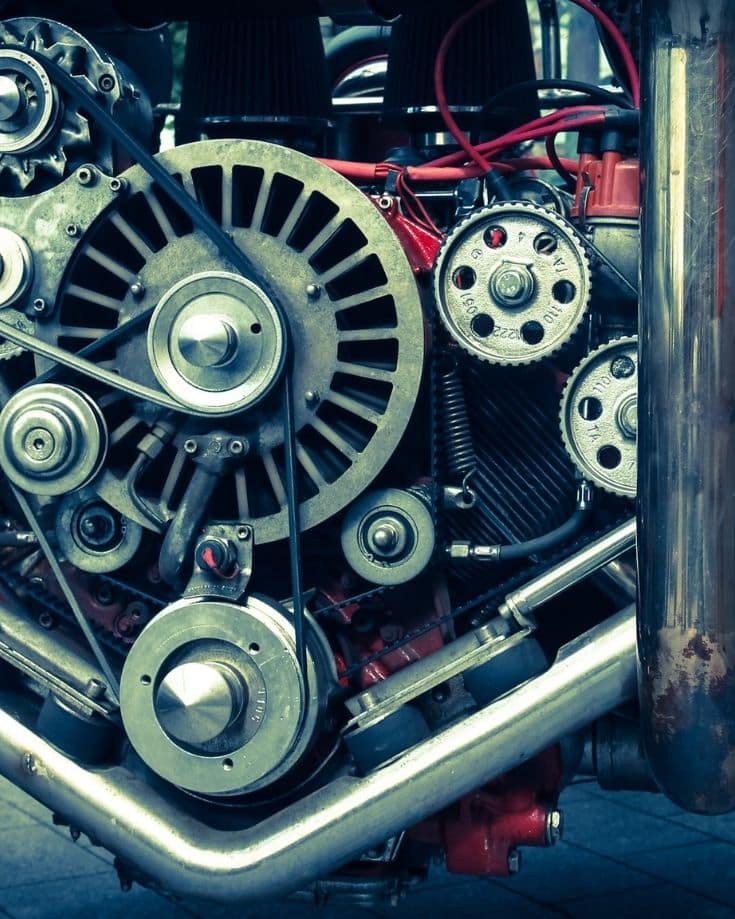
Input Voltage
This is the nominal voltage of the starter battery. Most vehicles have a 12v starter battery.
Choose a component with an input voltage matching the starter battery.
Output Voltage
Sometimes called nominal voltage, this refers to the voltage of the house battery.
Most campervans and motorhomes have a 12v system but there are a few that run on 24v.
Choose a component with an output voltage matching the leisure battery bank.
Input Current
This is the rated current (amps) of the component.
Choose a rating based on the total absorption rate of the house bank, as outlined in the previous section.
Some B2B chargers state the input and/or output voltages and the current rating in their model name.
For example Renogy’s 12V 60A DC to DC Battery Charger.
Recommended Leisure Battery Capacity
This is an indication of the total leisure battery bank size in amp hours (Ah).
Not all DC to DC chargers make reference to this though.
If any model you’re considering doesn’t mention it in the spec, use the total absorption rate to determine the maximum size necessary.
Battery Compatibility
Most battery to battery chargers are compatible with all lead-acid batteries (AGMs and Gels) as well as lithium-ions.
It’s worth double checking though.
Battery Temperature Sensor
Some B2B chargers include a sensor to monitor the battery temperature.
It responds to higher temperatures by reducing or switching off charging to protect the battery bank.
Combined Solar MPPT Charger
Some models combine the DC to DC charger with an MPPT charge controller for your solar system.
It’s tempting to opt for one component instead of 2 but more often than not, it’s tough to find one that suits both your MPPT and B2B sizing needs.
If you’re tempted down this route, first check what size MPPT controller you need then assess if the combined unit can meet these requirements.
Ignition Connection
Some B2B chargers need to be connected to the ignition, making installation a bit more complex.
When the ignition is turned on, the charger begins topping up the battery bank.
Note though, these begin draining the starter battery before the engine is necessarily running. It’s a bit like leaving your headlights on and can lead to a flat starter battery without care.
Our advice is to give them a wide berth – there’s enough reputable brands and models available without this “feature”.
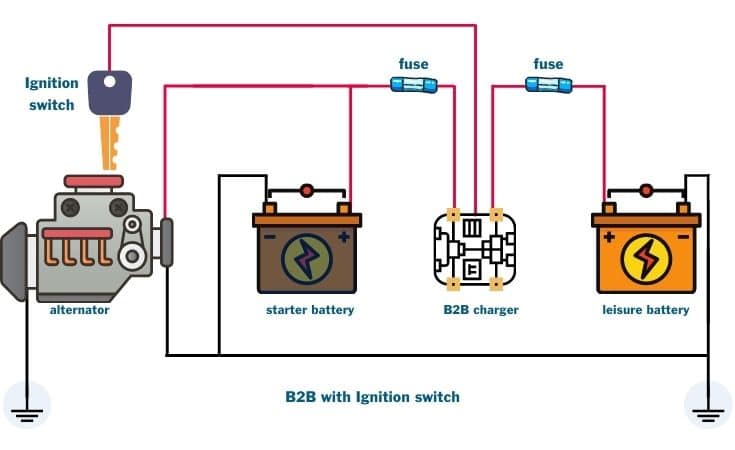
Water Resistance
Most battery chargers have some level of water resistance. Some waterproof models (ideal for boats), don’t have great cooling capabilities though.
The Sterling BBW12120 is an example of a waterproof model the manufacturer doesn’t recommend for campers.
The Best Battery to Battery Chargers
There are many brands manufacturing battery to battery chargers for campervans and motorhomes.
We recommend choosing a reputable brand offering a selection of models with good reviews.
Well known brands commonly installed in campervans, motorhomes and RVs include:
Battery to Battery Charger Wiring Diagram
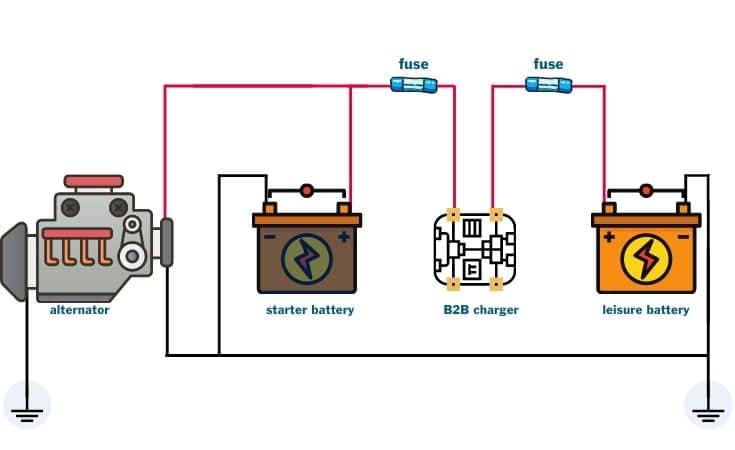
B2B Charger Installation Tips
Firstly, ALWAYS follow the manufacturer’s instructions.
Each B2B device is different so following their instructions should keep you safe, protect your vehicle & campervan electrics and ensure the device works correctly.
If any of our tips contradict the manufacturer’s instructions, follow their instructions NOT ours. They know their products better than we could ever hope to.
- Install the charger in a well ventilated location.
- The battery supply line fuses should be sized to the ampere rating of the B2B charger.
- Make sure the cables on either side of the component are rated for at least the largest battery bank. Check our wiring gauge table to be sure. The bigger the cable, the more efficiently the battery will charge so going up in size is a good thing!
- Avoid models that need to be wired to the ignition.
- Run the cables between the batteries along the shortest route, placing the B2B charger as close to that cable run as possible. This will help minimise voltage drops.
- Always lay cables and the charger in places protected from the elements and surface debris – so avoid places like the wheel arches.
Once the charger is installed check the operating manual for how to set it up.
You’ll most likely need to configure the device to your battery bank’s charging profile.
Automatically Create Your Bespoke RV Wiring Diagram
Includes 110v & 240v, solar, B2B, batteries, inverters, 12v, 24v & 48v systems, wire gauges in AWG & mm² & much more!

Graham Bogie

Graham is a seasoned marine electrical engineer with two decades of experience designing customized electrical systems for plant machinery and converting campers and overland vehicles. His expertise has led him to author the reputable Campervan Electrics Handbook and become the chief designer of the RV Wiring Design Tool. As a knowledgeable figure in the field, his YouTube channel, blog, Facebook group, and newsletter, offering electrical advice and product reviews, reach more than a million users each year.






